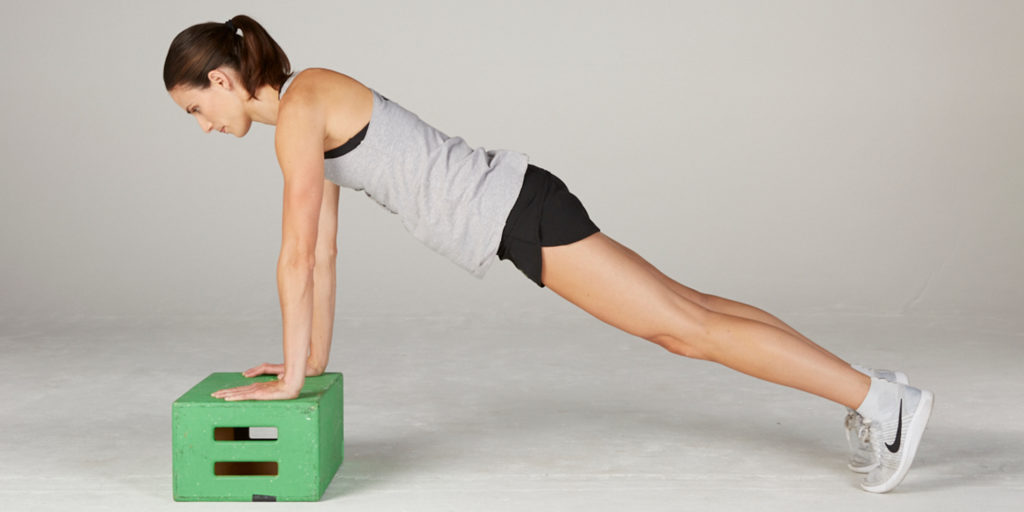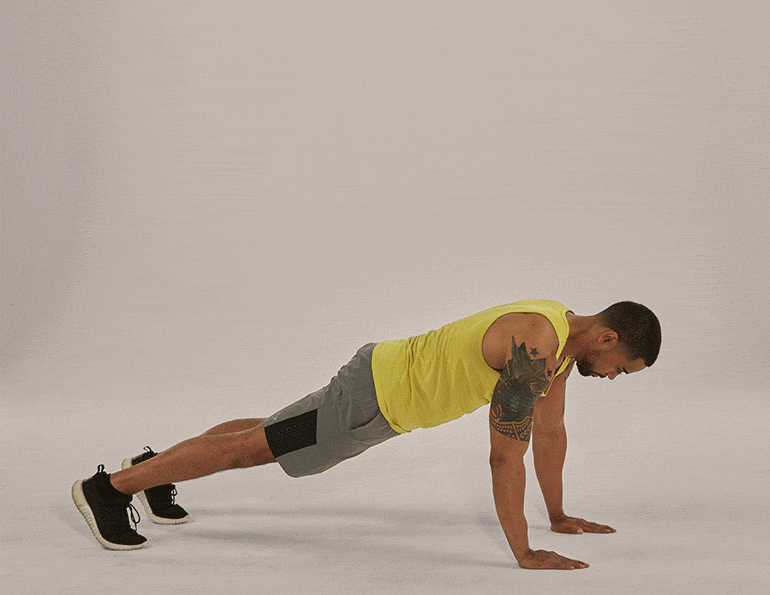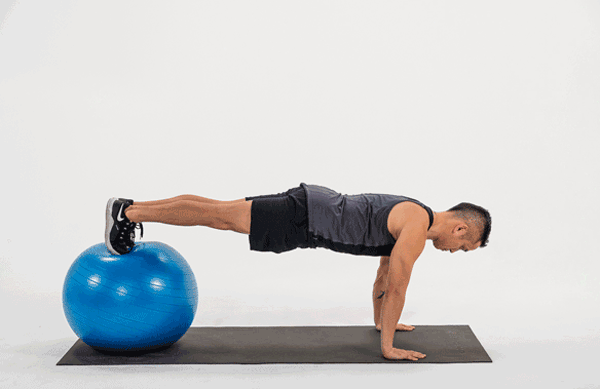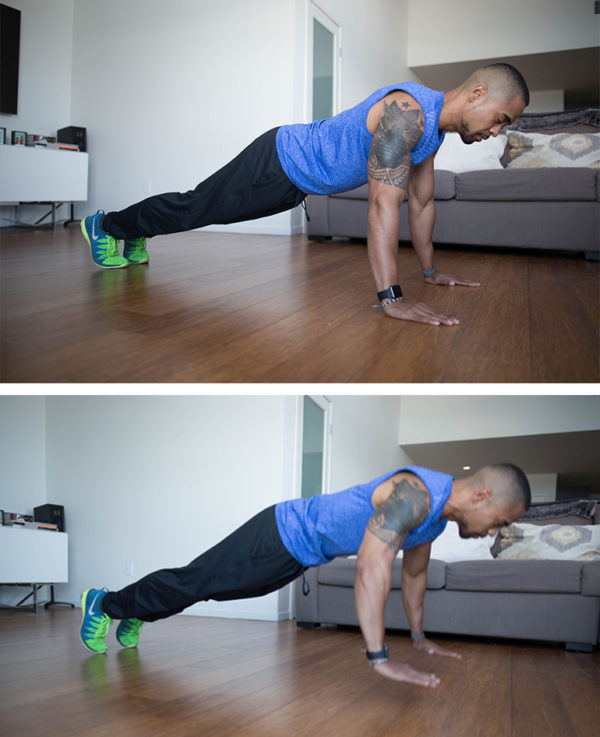How Many Push-Ups Should You Do a Day to Build Muscle?

Generally, strength-training objectives fall into a handful of major buckets: strength, power, endurance, and hypertrophy (muscle building).
So determining something like how many push-ups you should do a day depends on your primary goal.
If you’re looking specifically to build muscle with your push-up routine, here’s what you need to know about the different variations of this exercise as well as the volume and frequency of training you need.
This Is How Many Push-Ups Experts Say You Should Do to Build Muscle
To find out how many push-ups you need to do a day to build muscle, take your max reps for one set and use that to calculate a push-up goal for your upper-body days:
- If you can do fewer than 25 push-ups in a row, shoot for 50 to 75 push-ups
- If your max is between 25 and 50 push-ups, shoot for 75 to 150 push-ups
- If your max is over 50 (with good form!), shoot for 150 to 250 push-ups
You can break these numbers down into anywhere from two to four sets, suggests Jim White, R.D.N., ACSM Ex-P, owner of Jim White Fitness and Nutrition Studios
But that doesn’t mean you should be complacent with these ranges. They’re a good starting goal, but you also want to aim to do more push-ups each week.
Depending on your fitness level, White says a good goal is tacking even one or two push-ups onto the previous week’s number.
If this sounds conservative, that’s because it’s all about good form.
White underscores the fact that when determining your baseline — i.e., how many push-ups you can do at once — you should stop at the number of reps you can complete using the proper technique.
That means your butt shouldn’t sag or stick up in the air, your neck should be neutral, and your chest should lower to within a couple of inches of the floor, pausing at the bottom of the move before returning to the starting position.
Types of Push-Ups
Progressively overloading your upper body to build muscle doesn’t just mean constantly increasing your reps and sets.
This can also be accomplished by progressing from easier versions of the push-up, like modified ones on your knees, to more advanced and difficult versions, like clap or explosive push-ups.
1. Incline push-up

Consider incline push-ups if you’re trying to progress to full push-ups or more push-ups, or you need to take it easy.
Incline push-ups work the same muscles in a way similar to the traditional move, but require placing your hands on an elevated surface, which makes them easier.
Start at a higher altitude for easier versions and move your hands closer to the ground as your strength increases.
2. Plank push-up
Challenge your body with isometric work by starting on your forearms in the plank position instead of on your hands.
Using one arm at a time, you’ll get up from your forearms to your palms. Once you’re in a high plank, reverse course and lower yourself back to your forearms, one arm at a time.
3. T push-up

You’ll perform standard push-ups with this variation, but additionally, tax your shoulders between reps.
At the top of each rep during T push-ups, you rotate your body into a side plank, lifting your free hand toward the ceiling. But there’s no need to stack your feet; you’ll simply pivot on them depending on the direction of the rotation.
4. Diamond push-up

You might have also heard diamond push-ups referred to as triceps push-ups. Instead of keeping your hands shoulder-width apart, you’ll bring them together underneath you with your thumbs and pointer fingers touching to create a diamond shape.
From here you’ll do the push-up as you normally would, keeping your elbows tucked the entire time.
5. Decline push-up

If you’re repping out astronomical numbers of standard push-ups, challenge yourself with this variation.
For decline push-ups, you’ll position your feet on an elevated surface to increase the angle of your body and the degree of difficulty. To make it harder or easier, experiment with different surface heights or even your tempo.
6. Plyo push-up

With a basic plyo push-up, you’ll lower yourself to within a couple of inches of the ground, like normal. Then focus on explosive strength as you push your body up so that your hands lift a couple of inches off the ground between reps. If you’re new to plyometrics, start slow and land gently to avoid wrist injury. (Click here for the full move.)
Benefits of Push-Ups
You already know that push-ups are a simple, barrier-free way to start building your chest, shoulders, and triceps. But there are other benefits of push-ups you might not have considered.
1. They build strength as effectively as bench pressing
Participants in one study gained as much strength doing banded push-ups as others did via weighted chest presses. So don’t stress if people are using all the benches on your upper-body day.
2. They’re an easy way to measure overall fitness
Aside from your annual physical, push-ups may be an easy way to judge your overall fitness progress.
A study found that the number of push-ups performed in 30 seconds correlated with good cardiovascular health over a 10-year period in male firefighters.
Furthermore, push-ups are a bodyweight exercise, so the leaner you are, the more of them you’ll be able to do. That makes them an indirect gauge of body composition.
3. They can also improve your cardiovascular fitness
White notes that push-ups in your routine are “also working the cardiovascular system especially if incorporated with high-volume exercises.”
Folded into a cardio circuit of, say, squats, chin-ups, and dumbbell swings, push-ups can contribute as much to heart health as to chest and triceps size.
Is It OK to Do Push-Ups Every Day?
“Push-ups can be done on most days of the week,” White says. However, he suggests approaching them more cautiously if you have or have had upper-body injuries.
You can do push-ups every day if you’re doing a modest amount of them. White defines that as 10 to 20 push-ups if your max is 25 reps, 2 sets of 10 to 20 if your max is between 25 and 50 reps, and 2 to 3 sets of 10 to 20 if your max is above 50 push-ups.
“If you’re doing many sets and hitting a high volume, I would try to do them every other day,” he advises.
But, as always, you need to tailor this plan to your body and level of fitness. If you find that you feel extremely sore one day, White suggests skipping push-ups and coming back to them the following day.

